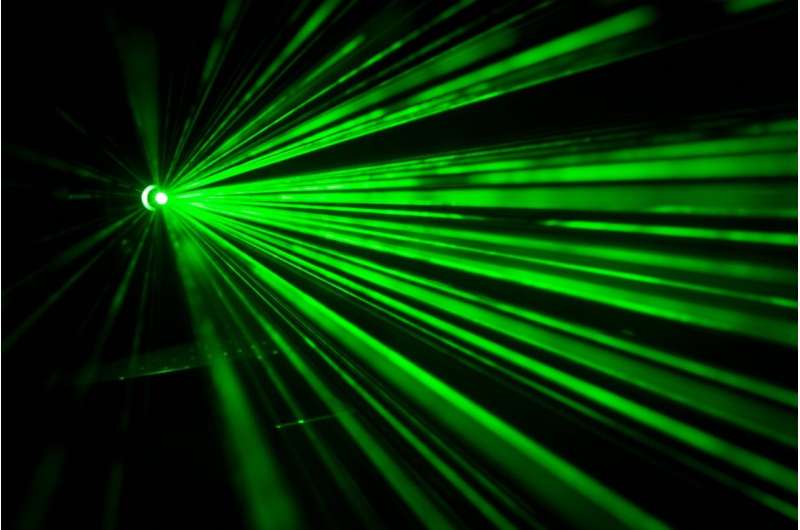Credit: CC0 Public Domain
Researchers at the University of Sheffield have synthesized a new compound which could improve the success rate of photodynamic therapy when treating cancer.
The key to photodynamic therapy (PDT) is a compound known as a sensitizer, a light-sensitive medicine given to the patient, which when activated by light produces highly reactive oxygen-based species which kill the cancer cells. However, current PDT treatment has two main drawbacks when it comes to killing tumors.
First, currently used sensitizers are only activated by light energies that do not penetrate tissues, like skin, very deeply. Second, many tumors have low amounts of oxygen, so photoactivated sensitizers cannot generate the toxic compounds which kill cancer cells.
Now scientists at the University of Sheffield have developed a new compound which solves both of these problems in one go. Not only is the new compound activated by infrared or red light which can penetrate deep into the tumor, but it also directly damages DNA within cells without having to rely on oxygen.
Researchers at the University of Sheffield have tested the compound in skin cancer tumor models and observed that it killed cancer cells deep into these model tumors. The next step in the research will look at skin models, testing whether the compound can kill the tumor but leave healthy skin undamaged.
Professor Jim Thomas, from the University of Sheffield's Department of Chemistry, who led the study said: "PDT is potentially a very attractive way to treat diseases such as skin cancer as it only works when the laser light is applied, so the effect can be focused into a specific place on or in the body.
"The sensitizer we have developed can potentially solve the two main problems that prevent PDT from being a commonly used anticancer treatment."
More information: Ahtasham Raza et al. A Dinuclear Ruthenium(II) Complex Excited by Near-Infrared Light through Two-Photon Absorption Induces Phototoxicity Deep within Hypoxic Regions of Melanoma Cancer Spheroids, Journal of the American Chemical Society (2020). DOI: 10.1021/jacs.9b11313
Journal information: Journal of the American Chemical Society
Provided by University of Sheffield
























